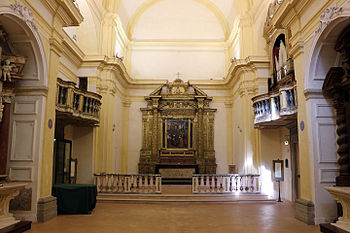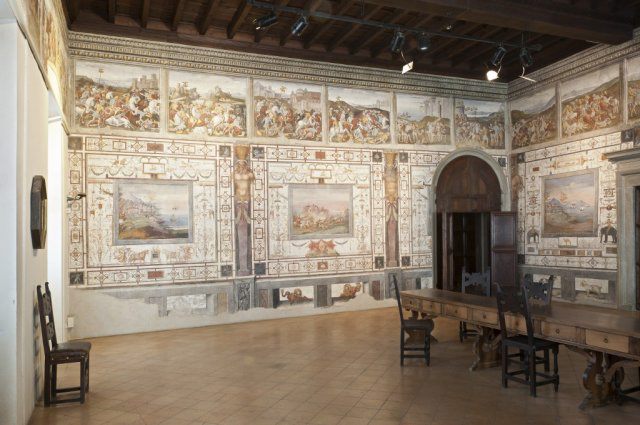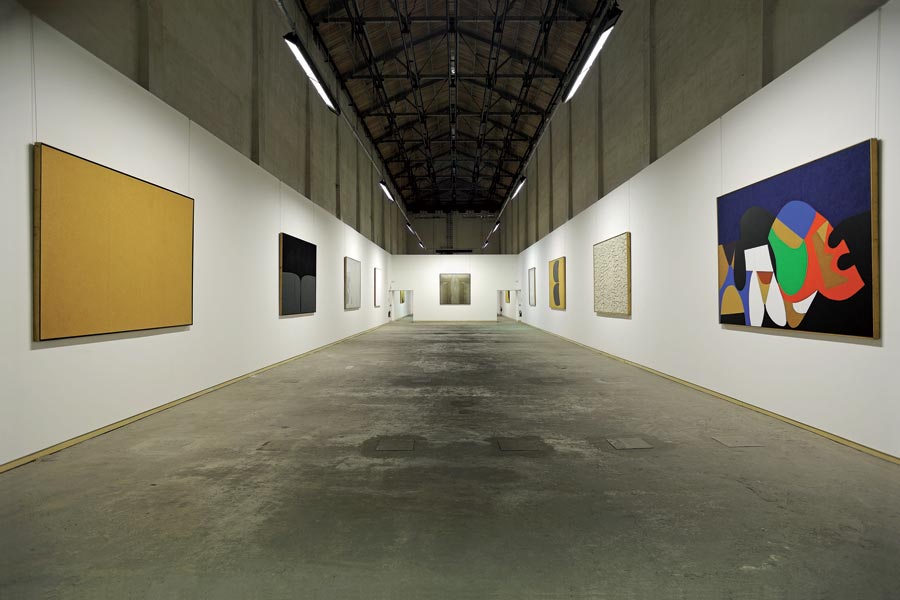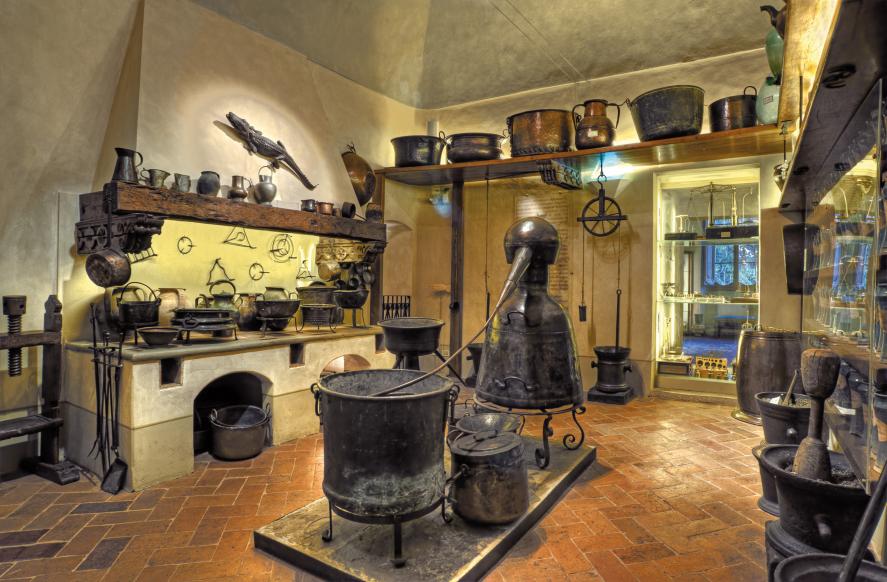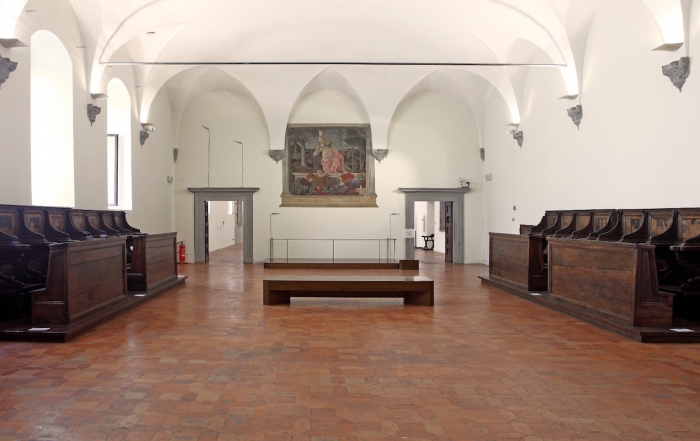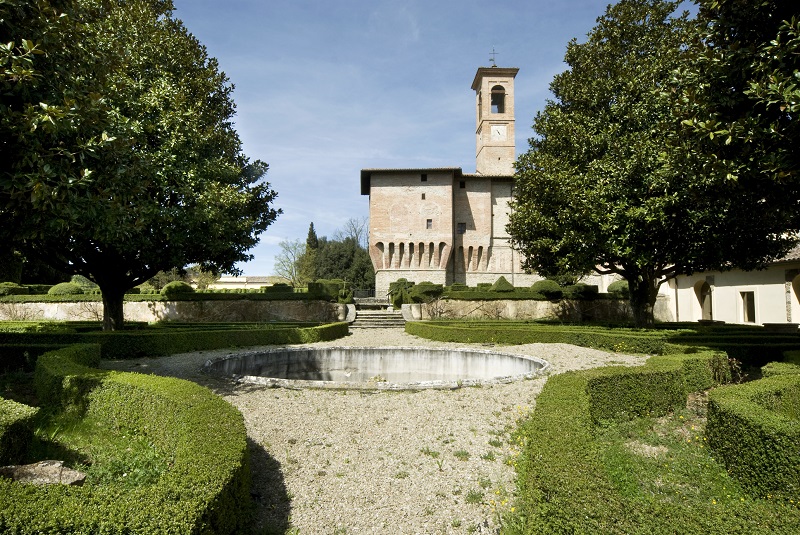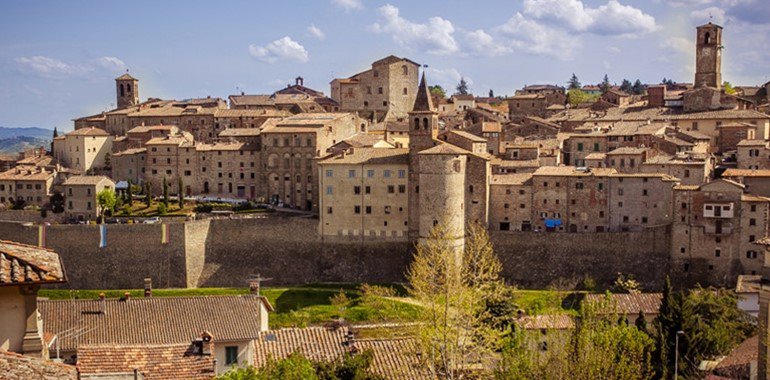EVENTS
NATIONAL GALLERY OF UMBRIA – Perugia
The National Gallery of Umbria is one of the richest collections in Italy with works of international interest. The artistic evidence it preserves ranges from paintings on wood, canvas and wall to wood and stone sculptures, goldsmithery and textiles, examples of the artistic production developed between the thirteenth and nineteenth centuries. The collections of …
MUSEUM SANTA CROCE – Umbertide
The museum is set up inside the Church of Santa Croce, the ancient oratory of the homonymous confraternity. The Umbertide museum is part of the unique ticket of the Terre & Musei dell’Umbria circuit. The fourteenth-century church of Santa Croce houses the City Museum. The altarpiece of the Deposition on the high altar, painted by …
MUSEUM MICHELANGIOLESCO – Caprese Michelangelo
The Michelangelo Museum is located at the fortress of Caprese Michelangelo; it consists of three main buildings, the Palazzo del Podestà, Palazzo Clusini and the Corte Alta, and a garden with outdoor exhibition. The original nucleus of the museum, founded in 1875, revolves around the Palazzo del Podestà, a building dating back to the first …
CIVIC MUSEUMS OF MADONNA DEL PARTO – Monterchi
The Museum of the Madonna del Parto in Monterchi preserves the splendid fresco by Piero della Francesca, one of the most famous of the artist from Arezzo and one of the highest expressions of the Renaissance. The work, which was originally located in the chapel of Santa Maria di Momentana in Monterchi, is shrouded in …
THE MADONNA OF DONATELLO – Citerna
The Madonna of Citerna is certainly one of the most fascinating and daring discoveries in the field of art in recent years, a discovery that has revealed to the public a masterpiece of undoubted artistic and cultural value. It was in 2004 when the volume Madonna di Citerna, Donatello’s unpublished terracotta, dedicated to the statue …
MUSEUM OF THE BATTLE OF ANGHIARI
There are many important works that the palace hosts: The Pleistocene Bifacial: on display is a selection of the most significant pieces from a collection of over 8000 instruments and splinters, belonging to the former “Centro Studi Archeologici e Naturalistici Altotiberino”. It is made up of: points, scrapers, toothbrushes, levallois nuclei and bifacials. The basin …
MALAKOS MALACOLOGICAL MUSEUM – Città di Castello
From the Pacific to the Indian Ocean, from the Red Sea to the Mediterranean: it is “Malakos” which, with about 600 thousand specimens catalogued, represents the largest private shell collection in Europe. The collection, in the Villa Cappelletti headquarters in Città di Castello, is a real exploratory journey through the shells of all seas. The …
DOCUMENTATION CENTRE OF POPULAR TRADITIONS
The Documentation Centre of Popular Traditions and Craftsmen’s Workshops of Umbria is housed in the Villa Capelletti complex in Garavelle, 1 km from the centre of Città di Castello. It is one of the first examples in Italy of a collection of objects linked to rural tradition. The museum of popular traditions is set up …
UMBRA CANVAS – Città di Castello
The Laboratorio Tela Umbra, founded in 1908 by Baroness Alice Hallgarten and her husband Leopoldo Franchetti, is a unique historical and productive experience. It is the only workshop in which pure linen is handcrafted using handlooms from the late 19th century, using original designs from the medieval and Renaissance periods. Alice Hallgarten Franchetti, a young …
DONATI GRIFATI TYPOGRAPHY- Città di Castello
Italy, because of its economic and cultural liveliness, is the country where the technique of printing with movable type (Subiaco 1465), invented by the German Gutenberg in the middle of the fifteenth century, was the first to spread. In Umbria in Foligno, already in 1472, the Mainz cleric Johan Numeister printed the first edition of …
MUNICIPAL PICTURE GALLERY – Città di Castello
The Municipal Picture Gallery was housed in its present location when in 1912 Elia Volpi, internationally renowned painter, restorer and antiquarian, donated the sixteenth century Palazzo Vitelli to the Town Hall. Built at different times, the building took on its definitive appearance in the first half of the sixteenth century and was so named because …
BURRI FOUNDATION – Città di Castello
The Palazzo Albizzini “Burri Collection” Foundation was founded in 1978 by Alberto himself Burri, with a first donation, endowed it with thirty-two works. It was recognised by decree of the President of the Regional Council of Umbria and took the name of the building that hosts it. The Collection at Palazzo Albizzini was opened to …
ABOCA MUSEUM – Sansepolcro
Aboca Museum is the only and original Museum of Herbs that recovers and hands down the history of the millenary relationship between man and plants. Through the Erbe e Salute nei Secoli (Herbs and Health in the Centuries) route, visitors will be amazed by the prestigious Renaissance seat of Palazzo Bourbon del Monte, in via …
MEDICEA FORTRESS OF GIULIANO DA SANGALLO – Sansepolcro
also called Fortress of Sansepolcro From Sangallo to Sansepolcro. Going south along via Niccolò Aggiunti, right on the final part we will meet the Medici fortress of Giuliano Giamberti da Sangallo (1445-1516), dating back to the beginning of 1500. The first fortress was built by the Malatesta family, between the 14th and 15th centuries, on …
SANSEPOLCRO CIVIC MUSEUM – Sansepolcro
The origins of the building that houses the Civic Museum of Sansepolcro are fourteenth-century. The rebuilding, above a previous building, was carried out at the behest of Galeotto Malatesta, around the early 1300s. Evidence of these historical origins are the underground rooms, once stables of the palace and which today house the treasure of the …
TOBACCO MUSEUM – San Giustino
Historical and scientific museum of tobacco San Giustino Umbro – Perugia Via Toscana, 06016 San Giustino Umbro PG In the area that first saw the cultivation of tobacco, the museum is located in the headquarters of the former tobacco growers’ consortium in the centre of San Giustino. Inside the museum it is possible to see …
BUFALINI CASTLE – San Giustino
Located right in the centre of the village of San Giustino, the complex of Palazzo Bufalini (XV- XVI century) looks like an elegant residence surrounded by greenery within the walls. The quadrangular fortress with four towers has the characteristics of military architecture in which medieval elements coexist with more modern Renaissance buildings. From 1487, the …
ARCHEOLOGICAL MUSEUM VILLA MAGHERINI GRAZIANI – San Giustino
A splendid example of a late Renaissance noble villa, Palazzo Magherini Graziani stands halfway up the hill in an open panoramic position overlooking the Tiber Valley. The villa was built by Carlo Graziani, an exponent of the typhernate family of Tuscan origin, at the beginning of the eighteenth century by commissioning the architect Antonio Cantagallina. …
The Upper Tiber Valley
It owes its name to the river of the same name, which flows from the springs of Monte Fumaiolo in Romagna into the artificial basin of Montedoglio, and then crosses Umbria and Lazio until it flows into the Tyrrhenian Sea. The valley, even if it constitutes a whole from the geographical point of view, already …
San Giustino
(4 min from the farmhouse) Don’t miss the Bufalini Castle: located in the centre of San Giustino, fortress of 1492, later transformed into a grand villa by Vasari, it is surrounded by an Italian style garden with a labyrinth. Just 2 km from San Giustino is the former Republic of Cospaia, a very small village …
Republic of Cospaia
The republic of Cospaia was a small independent territory from February 1441 to June 1826. Currently it is a fraction of the Municipality of San Giustino. The small became independent when, in February 1441, Pope Eugenio IV ceded the territory of Sansepolcro to the Republic of Florence. By mistake in the designation of the border, …
Sansepolcro
(at 7min) The main centre of the Tuscan Valtiberina, it boasts a valuable historical centre, closed by a wall bounded by gunboats and an imposing Medici Fortress (1350). The main square (Piazza Torre di Berta) is overlooked by Palazzo Pichi (16th century) and Palazzo Giovagnoli (13th century); a short distance away is the Duomo, a …
Anghiari and surroundings
(at 15min) In a dominant hilly position stands the majestic fortified village of Anghiari, whose fame derives from the fact that it was the scene of the Battle of Anghiari, fought in 1440 between the Florentines and Milanese, and immortalised in the famous fresco by Leonardo da Vinci in the Palazzo Vecchio in Florence (painted …
Citerna and Monterchi
(at 18 minutes) Not far from Anghiari, it is worth visiting Citerna and Monterchi. The charm of Citerna lies in the ancient fortress and the medieval walkways, both in perfect condition, as well as in the elevated position from which you can enjoy a magnificent panoramic view of the whole Valtiberina. Monterchi is best known …
Città di Castello
(at 15min) A flourishing town of Roman origins, the ancient Castrum Tifernum is today the real industrial engine of the Upper Tiber Valley, and stands out for its production of style furniture, cartography and metalwork. The city was deeply marked by the lordship of the Vitelli family, who governed it from the middle of the …
Monte Santa Maria Tiberina
(at 30min) Situated at an altitude of almost 700m, the village enjoys a superb view over the valley below; today almost uninhabited, it has kept all its medieval charm intact. Starting from the XI century it was the stronghold of the feud of the Marquis Bourbon del Monte who, having come to Italy following the …
Umbertide and Montone
(at 30min) Situated at the southern end of the Valtiberina, Umbertide offers visitors attractions such as the church of Santa Maria della Reggia (a majestic 16th century building with an octagonal plan, surmounted by a dome), the church of Santa Croce (built in 1651, it houses the Deposition of the Cross, a remarkable panel by …
Perugia
(45min from the farmhouse) Perugia, a city of Etruscan Roman origin and capital of the Umbria region, is home to one of the oldest universities in Europe (founded in 1308). The city centre is made up of the splendid Piazza IV Novembre, where the most illustrious monuments are located: in the middle is the Fontana …
Assisi
(at 55min) Assisi is situated in a panoramic position on a spur of Mount Subasio (1290 m), overlooking the plain of the mouse and Chiascio. For the magnificent monuments, the suggestive religious atmosphere that pervades it, the mystical memories of St. Francis and the grace of the landscape, it is one of the most frequented …
Gubbio
(50min from the farmhouse) Gubbio is one of the most characteristic cities of Umbria, on the edge of a beautiful plain and at the foot of Mount Ingino, full of charm for its intact, genuine medieval appearance and noble monuments; on May 15th, the eve of Saint Ubaldo, patron saint of the city, Gubbio is …
Arezzo
(40min from the farmhouse) Lying on the slope of a hill in front of the plain where the Valdarno, the Casentino and the Valdichiana bloom, Arezzo is renowned for its goldsmith and textile production. The centre of the city and Piazza San Francesco, where the basilica of St. Francis is located, in Tuscan Umbrian Gothic …
Castiglion Fiorentino
(at 50min) A small town surrounded by walls and characteristic for the 14th and 15th century towers on which the ancient keep stands; the structure of the village is well preserved, with its narrow streets flanked by ancient houses and palaces. In the central Piazza del Municipio there are the Logge del Vasari of the …
Cortona
(at 60min) Situated at an altitude of 500m above sea level, on a steep buttress of the Alta di San Egidio, Cortona is a large medieval village with buildings mainly made of sandstone, typical for the façades of the dwellings facing outwards and supported by characteristic wooden corbels; the ancient part of the town is …
Lake Trasimeno and its villages
(60 minutes away) In the green heart of Umbria on horseback with Tuscany, among the reeds and the enchanting white water lily, lies Lake Trasimeno, a real natural paradise where wild ducks, cormorants, kites and kingfishers flock. Beyond the flat slope, there are gentle hills with woods alternating with sunflower and corn fields, vineyards and …
Caprese Michelangelo
(35 minutes away) In the very name of the village, it bears the memory of the famous Michelangelo Buonarroti, who was born here on 6th March 1475. The territory is made up of a green valley, dominated by the wooded mass of the Alpe di Catenaia, called Alpe della Faggeta or, simply, Faggeto by the people …
Urbino
(at 75 min) The history and artistic fortunes of Urbino are closely linked to the Montefeltro family, who had it as a feud in 1213. The most illustrious personage was Duke Frederick (1444-82), a perfect example of a Renaissance prince, who made his court a cenacle of artists and men of letters. Under him was …


